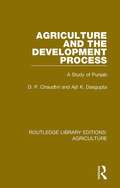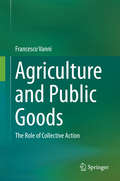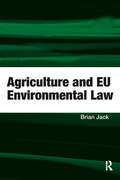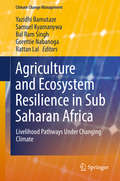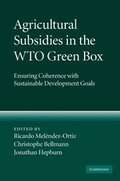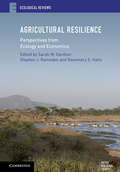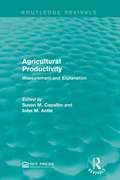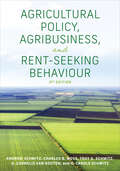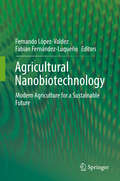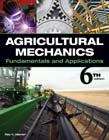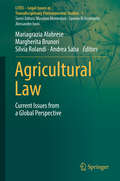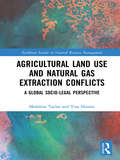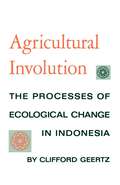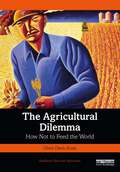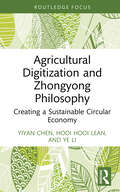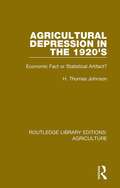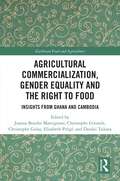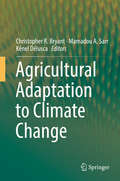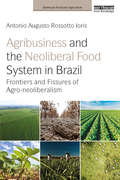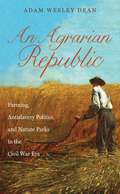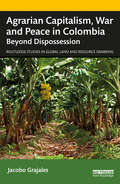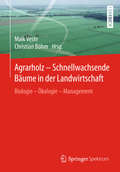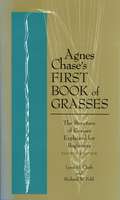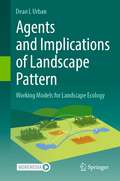- Table View
- List View
Agriculture and the Development Process: A Study of Punjab (Routledge Library Editions: Agriculture #2)
by D. P. Chaudhri Ajit K. DasguptaFirst published in 1985. The need to increase agricultural output and to use increased output to generate sustained general economic development is a problem facing many Third World countries. This book explores in particular the agricultural growth of the Punjab in Northern India, a country which has long been a leader in the formulation of new development strategies. It shows how agricultural output is affected by, and affects, demographic changes, income distribution, state involvement and structural changes both in society and the economy. Agricultural growth in the Punjab is seen in an historical perspective. In addition, the different aspects of economic development are viewed in an integrated way so that much is learned about the contribution of agricultural growth to the development process. The conclusions drawn can be related to problems and trends worldwide.
Agriculture and Public Goods: The Role of Collective Action
by Francesco VanniThe debate on the future orientation of the EU Common Agricultural Policy (CAP) is increasingly shaped by the role of agriculture in providing public goods, and there is a broad consensus that this approach will be particularly relevant in legitimating the policy intervention in agriculture in the future. In the context of this debate, it is not clear to what extent collective action could be taken into consideration as a valuable alternative to market or state regulation in contributing to the provision of public goods, and to what extent it is possible to design and implement agricultural policies that incorporate a collective and collaborative approach between different stakeholders in rural areas. Through an in depth analysis two case studies in Italy, the book provides insights to both the policy and the theoretical debate on the role of collective action for the public goods associated to agriculture.
Agriculture and EU Environmental Law
by Brian JackThis book critically examines the development and current structure of European Union agri-environmental measures at a substantive level. Examining the measures in an integrated manner, showing how they interrelate linking different aspects of European Union agricultural law and policy, this volume examines the legislation adopted at European Union level as well as the impact of particular national measures to implement that legislation. Where appropriate, comparisons are drawn between the manner in which European Union legislation has been implemented among various Member States. Critically assessing European Union and national measures, in the light of other policy pressures such as the influence of world trade agreements and the political pressures exerted by the agricultural sector within the national legal systems of individual Member States, this volume is a valuable resource for academics researching and practitioners working in the areas of European Union environmental and agricultural law.
Agriculture and Ecosystem Resilience in Sub Saharan Africa: Livelihood Pathways Under Changing Climate (Climate Change Management)
by Yazidhi Bamutaze Samuel Kyamanywa Bal Ram Singh Gorettie Nabanoga Rattan LalThis volume discusses emerging contexts of agricultural and ecosystem resilience in Sub Saharan Africa, as well as contemporary technological advances that have influenced African livelihoods. In six sections, the book addresses the sustainable development goals to mitigate the negative impacts on agricultural productivity brought about by climate change in Africa. Some of the challenges assessed include soil degradation, land use changes, natural resource mismanagement, declining crop productivity, and economic stagnation. This book will be of interest to researchers, NGOs, and development organizations.Section 1 focuses on climate risk management in tropical Africa. Section 2 addresses the water-ecosystem-agriculture nexus, and identifies the best strategies for sustainable water use. Section 3 introduces Information Communication Technology (ICT), and how it can be used for ecosystem and human resilience to improve quality of life in communities. Section 4 discusses the science and policies of transformative agriculture, including challenges facing crop production and management. Section 5 addresses landscape processes, human security, and governance of agro-ecosystems. Section 6 concludes the book with chapters uniquely covering the gender dynamics of agricultural, ecosystem, and livelihood resilience.
Agricultural Subsidies in the WTO Green Box: Ensuring Coherence with Sustainable Development Goals
by Ricardo Meléndez-Ortiz Christophe Bellmann Jonathan HepburnDo the World Trade Organization's rules on 'green box' farm subsidies allow both rich and poor countries to achieve important goals such as food security, or do they worsen poverty, distort trade and harm the environment? Current WTO requirements set no ceiling on the amount of green box subsidies that governments can provide, on the basis that these payments cause only minimal trade distortion. Governments are thus increasingly shifting their subsidy spending into this category, as they come under pressure to reduce subsidies that are more directly linked to production. However, growing evidence nonetheless suggests that green box payments can affect production and trade, harm farmers in developing countries and cause environmental damage. By bringing together new research and critical thinking, this book examines the relationship between green box subsidies and the achievement of sustainable development goals, and explores options for future reform.
Agricultural Resilience: Perspectives from Ecology and Economics (Ecological Reviews)
by Sarah M. Gardner Stephen J. Ramsden Rosemary S. HailsAgriculture as a social-ecological system embraces many disciplines. This book breaks through the silos of individual disciplines to bring ecologists and economists together to consider agriculture through the lens of resilience. It explores the economic, environmental and social uncertainties that influence the behaviour of agricultural producers and their subsequent farming approach, highlighting the importance of adaptability, innovation and capital reserves in enabling agriculture to persist under climate change and market volatility. The resilience concept and its relation to complexity theory is explained and the characteristics that foster resilience in agricultural systems, including the role of biodiversity and ecosystem services, are explored. The book discusses modelling tools, metrics and approaches for assessing agricultural resilience, highlighting areas where interdisciplinary thinking can enhance the development of resilience. It is suitable for those researching sustainable agriculture or those engaged in agricultural policy decisions and analysis, as well as students of ecology, agriculture and socioeconomics.
Agricultural Productivity: Measurement and Explanation (Routledge Revivals)
by Susan M. Capalbo John M. AntleThis book, first published in 1988, provides a comprehensive, integrated body of knowledge concerning agricultural productivity research, highlighting both its strengths and limitations. This book will be of value to scholars and research leaders for the knowledge it conveys of future productivity research, and will also be of interest to students of environmental studies.
Agricultural Policy, Agribusiness, and Rent-Seeking Behaviour, Third Edition
by Andrew Schmitz Charles Moss Troy G. Schmitz G. Cornelis van Kooten H. Carole SchmitzCosting billions of dollars annually, international trade in agricultural products is impactful and influenced by several factors, including climate change, food policy, and government legislation. The third edition of Agricultural Policy, Agribusiness, and Rent-Seeking Behaviour provides comprehensive economic analyses of the policies that affect agriculture and agribusiness in Canada and the United States. Looking at current agricultural policies, the third edition includes new chapters on food pyramids, climate change, and GMOs, while also highlighting the effect of international policies on Canadian trade, including the problematic US ethanol policy. The new edition addresses current issues, including how the COVID-19 pandemic has negatively affected agricultural value chains and played a hand in the ongoing growth in opioid use. Including a number of key findings, and discussing current debates on topics including foreign ownership of Canadian farmland, Agricultural Policy, Agribusiness, and Rent-Seeking Behaviour will appeal to students in agricultural economics and policy, as well as policymakers, agricultural firms, energy companies, and readers wishing to reduce their nation’s carbon footprint.
Agricultural Policy: Farm Programs and National Welfare
by Rainer SchickeleThis book is written for the student of rural America, be he farmer, businessman, labor leader, public servant, college student, or instructor, anyone who is curious to understand what problems farmers are facing in their relations to an industrial world, and what the government is doing to help them meet these problems.
Agricultural Nanobiotechnology: Modern Agriculture for a Sustainable Future
by Fernando López-Valdez Fabián Fernández-LuqueñoNanobiotechnology in agriculture is a new knowledge area that offers novel possibilities to achieve high productivity levels at manageable costs during the production and merchandising of crops. This book shows us how we can use the cutting-edge knowledge about agriculture, nanotechnology, and biotechnology to increase the agricultural productivity and shape a sustainable future in order to increase the social welfare in rural areas and preserve the environmental health. Specialists from several countries will provide their feedback on a range of relevant topics such as environment-friendly use of nanofertilisers, nanodevices, nano-food packaging, nanocoating and nanocarriers and their relationship with the modern agriculture.
Agricultural Mechanics: Fundamentals & Applications
by Ray V. HerrenA text for students learning basic mechanical skills in high school and postsecondary programs in agriscience, production agriculture, agribusiness, ornamental horticulture, and agricultural mechanics. Treatment begins with information on careers, then provides instruction on basic mechanical skills and applications. Covers use of hand tools, power tools, and stationary power equipment with numerous materials, touching on processes of wood- and metalworking, electric and gas welding, electrical wiring, robotics, plumbing, and construction. Includes color photos of male and female students, and 54 project plans. This fourth edition is revised to reflect the latest developments in the field. Annotation c. Book News, Inc. , Portland, OR (booknews. com)
Agricultural Law: Current Issues from a Global Perspective (LITES - Legal Issues in Transdisciplinary Environmental Studies #1)
by Mariagrazia Alabrese Margherita Brunori Silvia Rolandi Andrea SabaThis book focuses on the social and environmental issues being addressed by agricultural law within the current globalised system. What is agricultural law? Agricultural regulations concern and affect essential human needs and values that must be dealt with by pursuing a comprehensive and coordinated global approach. By tracking the developments in this context, this book explores the new challenges that agricultural law needs to address in order to frame emerging dilemmas. International governance of natural resources and their role in addressing food insecurity is the object of the first Part of the volume, which deals with sustainable agriculture and agro-ecosystem services in connection with the food security issue. The second Part focuses on the regulation of food as the main product of agricultural activity, and explores the answers that the law can provide in order to accommodate consumers' interests and concerns (inter alia, novel foods, animal welfare, direct sales and e-commerce). The third Part examines the social, environmental and legal consequences of a renewed interest in agricultural investments. Further, it analyses the evolution and the interplay between different legal systems with regard to land tenure, environmental concerns and investments in agriculture.
Agricultural Land Use and Natural Gas Extraction Conflicts: A Global Socio-Legal Perspective (Earthscan Studies in Natural Resource Management)
by Madeline Taylor Tina HunterOnshore unconventional gas operations, in most jurisdictions, operate on the legal principle that all activities during exploration and extraction are ‘temporary’ in nature. The concept that the onshore unconventional gas industry has a temporary effect on the land on which it operates creates a regulatory paradox. On one hand, unconventional gas activities create energy security, national wealth and a bourgeoning export industry. On the other, agricultural land and agriculturalists may be significantly disadvantaged by unconventional gas activities potentially producing permanent damage to non-renewable fertile soils and spoiling the underground water tables. Thus, threatening future food security and food sovereignty. This book explores the socio-regulatory dimensions of coexistence between agricultural and onshore unconventional gas land uses in the jurisdictions with the highest concentration of proven unconventional gas reserves – Australia, Canada, the USA, the UK, France, Poland and China. In exploring the differing regulatory standpoints of unconventional gas land uses on productive farming land in the chosen jurisdictions, this book provides an original three-part categorisation of regulatory approaches addressing the coexistence of agricultural land and unconventional gas namely: adaptive management, precautionary and, finally, statism. It offers a timely and topical approach to socio-legal natural resource governance theory based on the participation, transparency and empowerment for agricultural landholders, examining how differing frameworks such as the collective bargaining framework can create equitable and sustainable contractual arrangements with unconventional gas companies.
Agricultural Involution: The Processes of Ecological Change in Indonesia
by Clifford GeertzAgricultural Involution: The Processes of Ecological Change in Indonesia is one of the most famous of the early works of Clifford Geertz. It principal thesis is that many centuries of intensifying wet-rice cultivation in Indonesia had produced greater social complexity without significant technological or political change, a process Geertz terms "involution".Written for a US-funded project on the local developments and following the modernization theory of Walt Whitman Rostow, Geertz examines in this book the agricultural system in Indonesia and its two dominant forms of agriculture, swidden and sawah. In addition to researching its agricultural systems, the book turns to an examination of their historical development. Of particular note is Geertz's discussion of what he famously describes as the process of "agricultural involution" in Java, where both the external economic demands of the Dutch rulers and the internal pressures due to population growth led to intensification rather than change.
The Agricultural Dilemma: How Not to Feed the World (Earthscan Food and Agriculture)
by Glenn Davis StoneThe Agricultural Dilemma questions everything we think we know about the current state of agriculture and how to, or perhaps more importantly how not to, feed a world with a growing population. This book is about the three fundamental forms of agriculture: Malthusian (expansion), industrialization (external-input-dependent), and intensification (labor-based). The best way to understand the three agricultures, and how we tend to get it wrong, is to consider what drives their growth. The book provides a thoughtful, critical analysis that upends entrenched misconceptions such as that we are running out of land for food production and that our only hope is the development of new agricultural technologies. The book contains engaging and enlightening vignettes and short histories, with case studies drawn from across the globe to bring to life this important debate and dilemma. The book concludes by arguing there is a viable alternative to industrial agriculture which will allow us to meet the world's needs and it ponders why such alternatives have been downplayed, obscured, or hidden from view. This important book is essential reading for all studying and researching food production and agriculture, and more broadly for all interested in ensuring we are able to feed our growing population.
Agricultural Digitization and Zhongyong Philosophy: Creating a Sustainable Circular Economy (Routledge Focus on Environment and Sustainability)
by Yiyan Chen Hooi Hooi Lean Ye LiThis interdisciplinary book combines digital technology with Eastern philosophy to examine how the concept of Zhongyong in Confucianism can be used to coordinate digital technology with sustainable agriculture. Zhongyong comes from the connotation of moderate and sustainable in ancient Chinese culture. It is with this concept in mind that this book presents a novel collaboration between philosophy and computer technology to explain how Zhongyong can play an important part in realizing agricultural digitization within a circular economy in order to help solve the current food crisis. The book examines two popular, yet contradictory, digital technologies—blockchain and the green data center. It showcases how the use of traditional Chinese Zhongyong can promote the decentralization of blockchain and the centralization of the green data center and explains the advantages of using both technologies simultaneously. The book puts forward a digital circular agricultural framework that embeds both blockchain and the green data center through an actual case study. While this book specifically focuses on agriculture, it also provides readers with a new perspective for thinking further on how to break down the disciplinary barriers between the social sciences and natural sciences. This book will be of great interest to students and scholars of agriculture, digital technologies, circular economy, sustainable development, and Eastern philosophy.
Agricultural Depression in the 1920's: Economic Fact or Statistical Artifact? (Routledge Library Editions: Agriculture #1)
by Thomas H. JohnsonFirst published in 1985. This study explores the agricultural depression in the United States of America in the 1920’s. The author examines overproduction, wartime optimism and the farm crisis, and continuity and change in agriculture during this period. This title will be of great interest to students of history, agriculture, and economics.
Agricultural Commercialization, Gender Equality and the Right to Food: Insights from Ghana and Cambodia (Earthscan Food and Agriculture)
by Joanna Bourke Martignoni Christophe Gironde Christophe Golay Elisabeth Prügl Dzodzi TsikataThis volume explores agricultural commercialization from a gender equality and right to food perspective. Agricultural commercialization, involving not only the shift to selling crops and buying inputs but also the commodification of land and labour, has always been controversial. Strategies for commercialization have often reinforced and exacerbated inequalities, been blind to gender differences and given rise to violations of the human rights to food, land, work and social security. While there is a body of evidence to trace these developments globally, impacts vary considerably in local contexts. This book systematically considers these dynamics in two countries, Cambodia and Ghana. Profoundly different in terms of their history and location, they provide the basis for fruitful comparisons because they both transitioned to democracy in the early 1990s, made agricultural development a priority, and adopted orthodox policies of commercialization to develop the sector. Chapters illustrate how commercialization processes are gendered, highlighting distinctive gender, ethnic and class dynamics in rural Ghana and Cambodia and the different outcomes these generate. They also show the ways in which food cultures are changing and the often-problematic impact of these changes on the safety and quality of food. Specific policies and legal norms are examined, with chapters addressing the development and implementation of frameworks on the right to food and land administration. Overall, the volume brings into relief multiple dimensions shaping the outcomes of processes of commercialization, including gender orders, food cultures, policy translation, national and sub-national policies, corporate investments and programmes, and formal and informal legal norms. In doing so, it offers insight not only on our case countries, but also provides proposals to advance rights-based research on food security. This book will be of great interest to students and scholars of food security, agricultural development and economics, gender, human rights and sustainable development.
Agricultural Adaptation to Climate Change
by Christopher R. Bryant Mamadou A. Sarr Kénel DéluscaThis book deals with one of the major challenges facing human society and its governments, climate change and variability. The principal objective of the book is to explore how agricultural production through the actions primarily of farmers, including peasant farmers, adapt to these changing circumstances, what the limitations of adaptation are, how the process of adaptation varies between different territories (e. g. developed countries versus developing countries), and what are or can be the most effective roles for actors other than the farmers, including different levels of government and non-governmental organizations (NGOs) such as professional associations of farmers and community organizations. The principal argument is threefold: 1) while there are significant differences between territories and countries in terms of the capacity of farmers (and the other actors) to engage in capacity building to be able to adapt effectively to climate change and variability, 2) the critical roles are those played out by the farmers themselves, but that 3) other actors can play an important role in accompanying farmers in their adaptation process, providing relevant and strategic information, counseling them and facilitating networking and meetings when appropriate. This effectively means that without engaging in the local adaptation processes governments can really only play effective roles by working with other actors at the local and regional levels. When it occurs, it can be very effective, but when it does not, farmers are left to their own devices (and even then, many are able to use their own creativity and local knowledge to survive and continue to develop). Essentially therefore, the secondary argument that is followed throughout the book is that adaptation is essentially a social process that requires an understanding of social processes and dynamics in each farming community and territory. It involves an understanding, for instance, of information diffusion processes in the different farming communities and territories, which provides a set of tools to promote and facilitate the adoption process in the context of adaptation to climate change and variability.
Agribusiness and the Neoliberal Food System in Brazil: Frontiers and Fissures of Agro-neoliberalism (Earthscan Food and Agriculture)
by Antonio Augusto IorisDue to new production areas and persistent productivity gains, Brazil has consolidated its position as a global leader and even as a ‘model’ of commercial, integrated crop production. The country is now seen as an agricultural powerhouse that has a lot to offer in terms of reducing the prospect of a looming, increasingly global, food crisis. Agribusiness and the Neoliberal Food System in Brazil focuses on the intensification of Brazilian agribusiness as a privileged entry point into the politicised geography of globalised agri-food. Drawing on rich empirical analysis based around three fieldwork campaigns in the state of Mato Grosso, the book examines the connections between farming, markets and the apparatus of the state. The importance of agribusiness expansion within the wider politico-economic context of Brazilian neoliberalism is demonstrated, thus drawing broader conclusions about the main trends of agribusiness in the world today and providing recommendations for future research. This book will be of great interest to students and scholars of agribusiness, neoliberalism and global food production, as well as those interested in Brazil and Latin America more generally.
An Agrarian Republic
by Adam Wesley DeanThe familiar story of the Civil War tells of a predominately agricultural South pitted against a rapidly industrializing North. However, Adam Wesley Dean argues that the Republican Party's political ideology was fundamentally agrarian. Believing that small farms owned by families for generations led to a model society, Republicans supported a northern agricultural ideal in opposition to southern plantation agriculture, which destroyed the land's productivity, required constant western expansion, and produced an elite landed gentry hostile to the Union. Dean shows how agrarian republicanism shaped the debate over slavery's expansion, spurred the creation of the Department of Agriculture and the passage of the Homestead Act, and laid the foundation for the development of the earliest nature parks.Spanning the long nineteenth century, Dean's study analyzes the changing debate over land development as it transitioned from focusing on the creation of a virtuous and orderly citizenry to being seen primarily as a "civilizing" mission. By showing Republicans as men and women with backgrounds in small farming, Dean unveils new connections between seemingly separate historical events, linking this era's views of natural and manmade environments with interpretations of slavery and land policy.
Agrarian Capitalism, War and Peace in Colombia: Beyond Dispossession (Routledge Studies in Global Land and Resource Grabbing)
by Jacobo GrajalesBased on extensive research conducted in Colombia since 2009, this book addresses the connection between land grabbing and agrarian capitalism, as well as the unfulfilled promises of peace and justice. While land remains a key resource at the core of many contemporary civil wars, the impact of high-intensity armed violence on the formation of agrarian capitalism is seldom discussed. Drawing on nearly 200 interviews, archival research, and geographical data, this book examines land grabbing and the role of violence in capital with a particular focus on one key actor in the Colombian civil war: paramilitary militias. This book demonstrates how the intricate ties between armed conflict and economy formation are obscured by the widespread belief that violence is a radical form of action, breaking with the normal course of society and disconnected from the legal economy. Under this view, dispossession is perceived as diametrically opposed to capitalist accumulation. This belief is enormously influential in precisely those bureaucratic agencies that are in charge of peacebuilding, both domestically and internationally. However, this narrow view of the relationship between armed violence and capitalism belies the close ties between plunder and lawful profit, and obscures the continuity between violent dispossession and the free market. By the same token, it legitimizes post-war inequality in the name of capitalist development. The book concludes by arguing that the promotion of radical democracy in the government of land and rural development emerges as the only reasonable path for pacifying a violent polity. The book is essential reading for students, scholars, and development aid practitioners interested in land and resource grabbing, agrarian capitalism, civil wars, and conflict resolution.
Agrarholz – Schnellwachsende Bäume in der Landwirtschaft: Biologie - Ökologie - Management
by Christian Böhm Maik VesteDas Buch bietet eine umfassende aktuelle Zusammenfassung und Bewertung der bisherigen Forschungserfahrungen zum Thema Agrarholz und berücksichtigt sowohl Plantagenwirtschaft als auch agroforstliche Nutzungsformen. Es greift die verschiedenen Aspekte der Etablierung von Agrarholz in der Landwirtschaft aus Sicht der Pflanzenökologie und der Ökosystemforschung auf und diskutiert diese im Kontext mit der Produktivität und dem Agrarholz-Management. Zudem werden auch Aspekte der historischen Landnutzung, der Landschaftsplanung und des praktischen Flächenmanagements behandelt und wesentliche Grundlagen zur Biologie, Genetik, (Landschafts-)Ökologie, und der Nutzung von Agrarholz vermittelt. Zielgruppe sind Studierende und Lehrende der Agrar- und Forstwissenschaften, der (Landschafts)-Ökologie, der Umwelt-, Natur- und Landschaftsplanung, des Umwelt- und Ressourcenschutzes sowie Wissenschaftler, Vertreter von Fachbehörden und -verbänden, Naturschützer, Land- und Forstwirte und Anwender angrenzender Fachbereiche.
Agnes Chase#s First Book of Grasses: The Structure of Grasses Explained for Beginners, Fourth Edition
by Lynn G. Clark Richard W. PohlFor almost seventy-five years, Agnes Chase's First Book of Grasses has been the classic guide to the structure of this complex group of plants. Clearly written and copiously illustrated with line drawings, the book is accessible to those with little or no botanical training, yet it also is respected by botanists as an authoritative introduction to agrostology.Last updated in 1959, the book now has been thoroughly revised to reflect current scientific knowledge, nomenclature, and classification. Divided into twelve lessons, the guide first surveys the basic vegetative and reproductive parts of a grass plant, then in succeeding lessons takes up increasingly more complex modifications. Formally recognized groups of grasses are discussed in a taxonomic context, with the principal focus on grass structures, particularly those of inflorescences and spikelets. Virtually all of the species discussed are illustrated with detailed line drawings. With the addition in this edition of a lesson on bamboos, coverage now extends to tropical regions and encompasses all major groups of grasses. The book also includes a short biography of Agnes Chase in the foreword and, for the first time in this edition, a glossary accompanies the appendices on grass classification.
Agents and Implications of Landscape Pattern: Working Models for Landscape Ecology
by Dean L UrbanThis is an ecology textbook focused on key principles that underpin research and management at the landscape scale. It covers (1) agents of pattern (the physical template, biotic processes, and disturbance regimes); (2) scale and pattern (why scale matters, how to ‘scale’ with data, and inferences using landscape pattern metrics); and (3) implications of pattern (for metapopulations, communities and biodiversity, and ecosystem processes). The last two chapters address emerging issues: urban landscapes, and adapting to climate change. This book stems from two graduate-level courses in Landscape Ecology taught at the Nicholas School of the Environment at Duke University. The subject has evolved over time, from a concepts-based overview of what landscape ecology is, to a more applied practicum on how one does landscape ecology. As landscape ecology has matured as a discipline, its perspectives on spatial heterogeneity and scale have begun to permeate into a wide range of other fields including conservation biology, ecosystem management, and ecological restoration. Thus, this textbook will bring students from diverse backgrounds to a common level of understanding and will prepare them with the practical knowledge for a career in conservation and ecosystem management.
